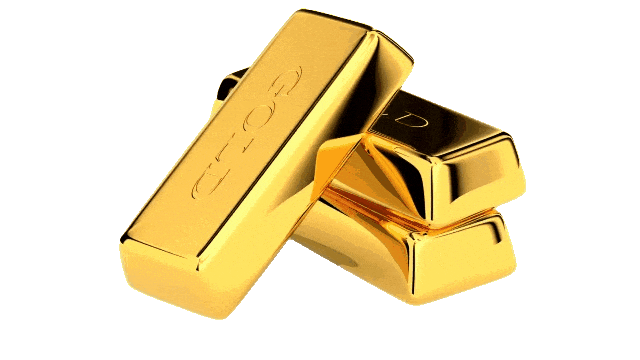Gold Trade: An Essential Guide to Trading the Precious Metal
Introduction to Gold Trade
Gold has been a symbol of wealth and stability for centuries, and today, it remains one of the most popular commodities traded across the globe. Whether you’re a beginner or a professional trader, gold holds a unique place in the world of financial markets. In this blog, we’ll take a deep dive into gold trading, how it works, the factors influencing prices, trading strategies, and why gold trade continues to be a preferred choice for many.

Gold is often considered a safe-haven asset. When markets become volatile or economic conditions deteriorate, investors turn to gold as a store of value. This is because gold tends to retain its value even during periods of inflation, geopolitical tensions, or financial crises.
Key reasons traders prefer gold include:
- Liquidity: Gold markets are highly liquid, allowing for smooth entry and exit.
- Global Demand: Gold is traded globally, with demand from investors, central banks, and industries.
- Diversification: Gold can help diversify portfolios and reduce overall risk.
- Hedge Against Inflation: Gold typically performs well during inflationary periods.
There are multiple ways to engage in gold trade. Traders can choose an instrument based on their risk appetite, investment horizon, and market knowledge.
1. Spot Gold Trading
This involves buying and selling gold at the current market price. It’s the most straightforward form of trading and often used for short-term trades.
2. Gold Futures
Futures are contracts to buy or sell gold at a predetermined price at a future date. They are ideal for speculative traders and institutions.
3. Gold ETFs (Exchange-Traded Funds)
ETFs allow traders to invest in gold without owning the physical commodity. It’s a low-cost and convenient option.
4. Gold Mining Stocks
Investing in companies that mine gold can also provide exposure to gold price movements.
5. Gold CFDs (Contracts for Difference)
CFDs enable traders to speculate on gold price movements without owning physical gold. They are ideal for margin trading.
Understanding the Gold Market
Gold is traded almost 24 hours a day across the globe. The major gold markets are located in:
- London – The London Bullion Market is a global hub for over-the-counter (OTC) gold trading.
- New York – COMEX (a division of CME) is a primary futures exchange for gold.
- Shanghai – The Shanghai Gold Exchange is a key player in Asia.
Trading activity in these markets can influence gold prices significantly, particularly during overlapping sessions.
Factors That Influence Gold Prices
Gold prices are affected by a range of macroeconomic and geopolitical factors:
1. U.S. Dollar Strength
Gold is priced in U.S. dollars. When the dollar strengthens, gold becomes more expensive for other currency holders, often leading to lower demand.
2. Inflation
Rising inflation typically increases gold demand as investors look for assets that preserve purchasing power.
3. Interest Rates
Higher interest rates can reduce the appeal of gold, which doesn’t offer interest income. Conversely, low rates often support gold prices.
4. Geopolitical Events
Crises such as wars, pandemics, or political instability often trigger a rise in gold demand due to its safe-haven status.
5. Central Bank Policies
Central banks are major gold buyers. Their buying or selling activities can sway global prices.
Gold Trading Strategies
Successful gold trading involves strategic planning and risk management. Here are some widely used trading strategies:
1. Trend Following
Traders analyze charts to identify ongoing trends and enter positions in the direction of the trend. Moving averages and RSI are popular tools here.
2. Breakout Trading
This strategy involves entering trades when gold breaks key support or resistance levels. Breakouts often indicate strong price movements.
3. News-Based Trading
Reacting to macroeconomic announcements like interest rate changes, inflation reports, or job data can offer trading opportunities.
4. Scalping
Short-term trades to capture small price movements, often suitable during high volatility periods.
5. Position Trading
Longer-term strategy where traders hold positions for weeks or months, based on fundamental analysis and economic outlook.
Risks Involved in Gold Trading
Like any financial market, gold trading comes with risks:
- Volatility: Gold prices can swing sharply due to global news or economic data.
- Leverage Risks: Trading on margin increases both profits and potential losses.
- Market Timing: Entering or exiting trades at the wrong time can result in losses.
Emotional Trading: Fear and greed can lead to poor decision-making.
Tips for Gold Traders
To succeed in the gold trade, consider the following tips:
- Stay Informed: Monitor global economic news and geopolitical developments.
- Use Technical and Fundamental Analysis: Combine chart reading with macroeconomic analysis.
- Set Stop-Loss Orders: Always protect your downside.
- Diversify: Don’t invest all capital in a single asset class.
Choose the Right Broker: Work with a regulated broker offering fair spreads and fast execution.
Why Choose Market Nexus Edge for Gold Trade Guidance?
At Market Nexus Edge, we provide accurate insights and trading signals tailored to market conditions. Our team of analysts monitors gold trends around the clock to help you make informed decisions. Whether you’re a beginner or a seasoned trader, our platform supports:
- Real-time signals
- Daily technical analysis
- Personalized support
- Risk management guidance
We are committed to helping you navigate the gold markets with confidence and clarity.
Conclusion
Gold trading offers both opportunities and challenges. Its unique characteristics make it an appealing asset for traders looking to diversify and hedge against uncertainty. With the right strategy, tools, and market understanding, gold can become a powerful part of your trading portfolio.
Ready to begin your journey into gold trade? Join Market Nexus Edge today and make informed trading decisions with our expert insights.
